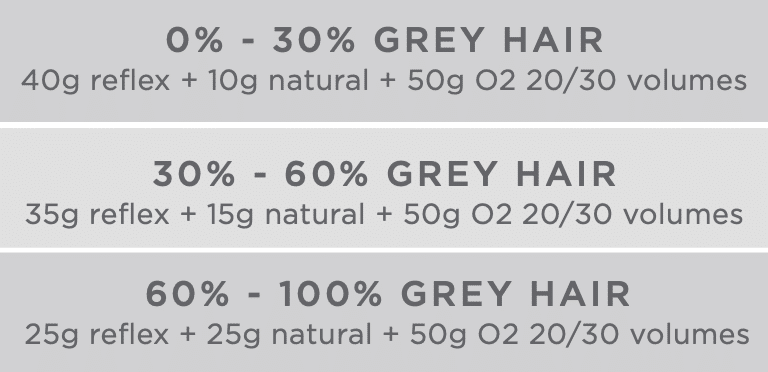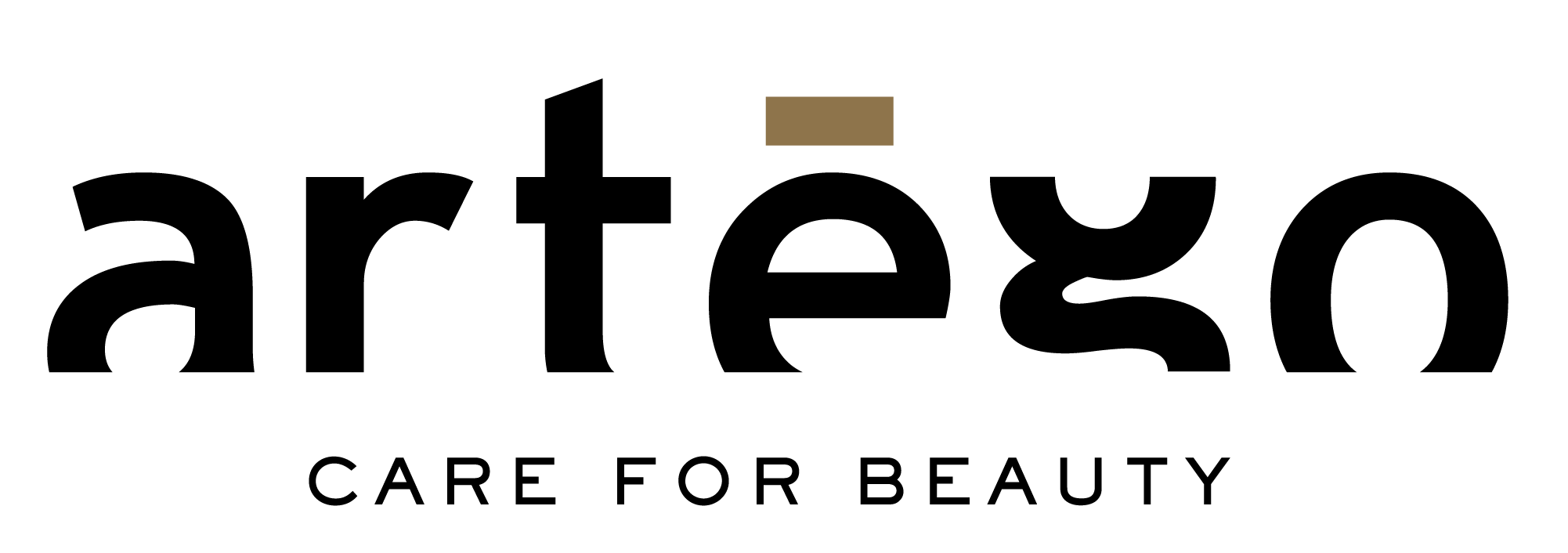COVERING SERIES
Among the It’s Color series, the ones conceived to obtain the higher grey hair coverage are the NATURALS .0>N and the COLD NATURALS .00>NN. In their creams there are pigments with different color, in a perfect and stable balance; once these pigments get inside the hair among the cortex fibers, they will simulate the natural hair situation perfectly. They are able to cover 100% grey hair effectively and reach the desired level. Every time we decide to use a reflex shade in our color covering formula (.4, .44, .5, .6 etc.), it is advisable to add more natural to the formula as the percentage of grey hair increases. IT IS POSSIBLE TO FOLLOW THIS CHART
CHOOSING THE PEROXIDE
When formulating a color aimed at covering grey hair, we need to use a peroxide that is not higher than 20 volumes, because what is needed is facilitating the deposit of pigments (to the detriment of the highlifting phase). In some cases, on 100% grey hair, it will be necessary to use a 30 Volumes peroxide, to make sure we oxidize and color all the cosmetic pigments and that color penetrates into the resistant cuticle, since grey hair is very resistant.
Let’s go back now to the It’s Color 4 Golden Rules, but considering the presence of grey hair. Thinking it through we will find the most suitable formula to reach the goal: desired shade and coverage.
Determining the starting level and the natural reflex (diagnosis)
In addition to a correct and professional diagnosis we also need to evaluate the percentage of grey hair. For a correct analysis let’s say that the so called salt and pepper hair correspond to 50% (it is difficult to state if there is more grey hair or colored hair).
If grey hair is spread all over the head with the same intensity, we will only give one evaluation, for example 30%. On the contrary, if we find some areas with more grey hair, we will give different evaluations with different percentages (i.e. 70% forehead and anterior area, 30% occipital and posterior area or 100% temple area).
Determining the desired level (choosing the peroxide)
Also the second golden rule–the choice of the right peroxide to reach the desired level–will be influenced by the grey hair presence:
- In general, when we need to cover grey hair, the right peroxide is 20 volumes.
- If we want to get a more evident lift (especially on thick and resistant hair) and a good grey hair coverage at the same time, it will be necessary to use 30 volumes peroxide.
- The 30 volumes choice becomes essential when we need to cover high percentages of grey hair (close to 100% of resistant hair)
Determining the desired reflex (choosing the shade)
When the choice falls on a natural result we don’t need particular precautions because the selection will be among the natural shades, that ensure a perfect coverage. If we choose, instead, a result with a stronger reflex we will need to mix the reflex shade with a natural one, depending on the grey hair percentage to cover (following the previous chart).
Choosing the formula (final result)
When we work on a head with different grey hair percentages (which often happens), it is necessary to pay attention. We will formulate different mixtures for different areas, according to the grey hair percentage. Sometimes it will be necessary to change the peroxide strength.
PRE-COLORATION
In rare cases there can be a 100% concentration of grey hair in a confined area and it is known that this hair is thicker and more resistant to absorption, so that it is difficult to obtain satisfactory and uniform covering results with standard procedures.
In these cases, 10/15 minutes before color application, it is possible to carry out a technique called pre-coloration: apply a shade 1 level lighter than the desired one, mixed with 5 volumes peroxide in equal dose (1:1); after 5/10 minutes developing time proceed with the coloration applying the desired shade. The 5 volumes peroxide is obtained by mixing equal doses of 0 volumes and 10 volumes peroxide.
COVERING AND LIFTING
When coloring a head with a 50% percentage of grey hair, uniformly spread, we could face a delicate problem: covering grey hair and lifting natural hair at the same time. With traditional colorations, to obtain a good coverage, we usually need to use peroxides up to 20 volumes, lifting then up to 2 levels, insufficiently and badly, with undertone results.
It’s Color, with its perfect balance between pigments and ammonia, allows the use of 30 volumes peroxide to lift yet maintain its deposit potential.
With It’s Color, we can obtain on the same head–and at the same time–a great result: covering grey hair and lifting natural hair up to 3 levels.
